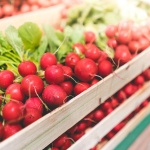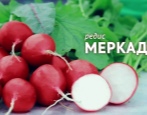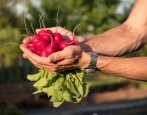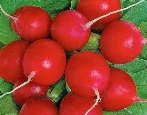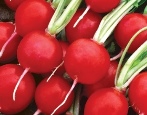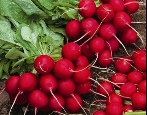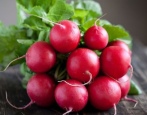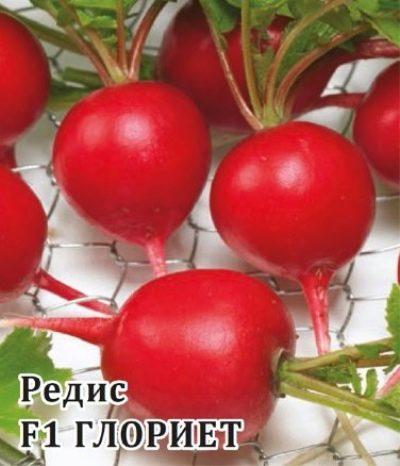
- Name synonyms: Gloriette
- Year of approval: 2010
- Ripening terms: early maturing
- Leaf rosette shape: semi-upright
- Leaves: obovate, yellowish green
- Petiole: with a slight anthocyanin coloration
- The form: rounded
- Coloration: Red
- Weight, g: 18-23
- Color of the pulp: white
Gloriet is a hybrid radish that has been approved for use since 2010. This variety is quite popular in Russia, which is explained by the mass of its advantages. Let's take a closer look at this interesting vegetable.
Description of the variety
The main advantage of Gloriet radish is its marketability, which persists for a long time. This species can be grown both in open and protected ground. The variety is highly resistant to shooting and cracking. The presented species is recommended for cultivation in the North, North-West, Central, Volgo-Vyatka, North Caucasian, Middle Volga, Nizhnevolzhsky, Ural, West Siberian, East Siberian, Far Eastern regions and Central Black Earth Region.
Characteristics of the appearance of the plant and root crops
Gloriet has a semi-erect rosette and obovate yellow-green leaves. The petiole is distinguished by a light anthocyanin coloration. Root crops are round in shape, leveled, their weight is 18–23 g, skin color is red.
Purpose and taste of tubers
This radish is perfect for making salads or okroshka, as well as for getting bunch of products. Hidden inside is white, tender, juicy pulp with very good taste.
Maturation
From the moment of emergence of the first shoots to harvest, only 23–27 days pass, which is typical for varieties with an early ripening period.
Yield
This is a high-yielding variety, which on average is capable of producing 2–2.5 kg of root crops per m2.
Growing and care
The optimal time for planting is April - May. To get a vegetable in September or October, sowing is carried out in August. If you want radishes to be stored all winter, they are planted in September.
Gloriet prefers to grow in beds that are well lit by the sun. Without the required amount of light, the roots will not reach the declared weight. The culture will feel more comfortable in loose garden soil, which passes water well, since it is a moisture-loving variety. The best option is sandy loam.
The seeds of the hybrid do not need additional processing. It is important not to plant radishes after cruciferous plants, but carrots and onions will become good neighbors for him. Sowing is carried out immediately in open ground, since this culture does not tolerate transplantation due to the fragile root system, which in the future after transplantation may not turn into a root crop. Moreover, this is an early ripe variety, therefore, there is no point in seedlings. Planting and growing are as follows:
- plant seeds according to the 5-7x15 cm pattern;
- provide the vegetable with abundant watering, but make sure that moisture does not accumulate on the surface of the soil;
- periodically thin out if the crops are too thick;
- refuse to apply manure and nitrogen mixtures in large quantities;
- feed seedlings at the age of 8-11 days with the chelated fertilizer Plantafol 0 + 25 + 50 with a high content of potassium and phosphorus.
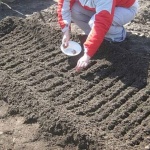

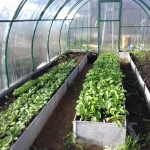
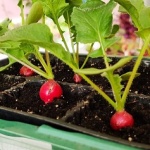
Disease and pest resistance
The Gloriet variety is highly immune to such a common disease as Fusarium wilting, but occasionally cruciferous fleas and scoops can attack it. To prevent their invasion, treat plants with biofungicides.

Review overview
Consumers note the very pleasant taste of Gloriet radishes. The tubers are smooth, aesthetic, red, almost never eaten by insects. Also, summer residents are attracted by the unpretentiousness of the variety to the conditions of detention: Gloriet can withstand cold or not too rich soil, but is picky about light. Gardeners especially highly appreciate the high yield of the hybrid and its commercial qualities.
